
An ongoing debate surrounds recent resurfacing work carried out by Sheffield City Council on Houndkirk Road, a popular byway following a historic pack hourse route on the edge of the Peak District National Park.
Resurfacing at the end of the road nearest the Norfolk Arms pub, designed to stabilise the road surface, has drawn criticism from walkers and mountain bikers. The works consist of a base of locally quarried gritstone shaped with a fall to shed water, which was then dusted with smaller gritstone and sand and compacted to form the surface. Sheffield City Council (SCC) have excavated some soft areas to make the track more uniform, and partially cleared a culvert to allow surface and drainage water to follow a natural course under the track and into a wetland area. Some rocks have been placed along the sides of the route to keep off-road vehicles to the surfaced track and prevent them spreading onto the wider moorland, a Site of Special Scientific Interest (SSSI) managed by Natural England. Houndkirk Road is a byway open to vehicle traffic, and in the past there have been problems with irresponsible vehicle use in the area.
But not everyone is happy with the result. Local activist, climber and mountain biker John Horscroft feels the cure is worse than the disease.
'This is like taking a sledgehammer to crack a nut' he observes.
'Recent incursions onto the moor by 4×4's have been all but absent. Since SCC resurfaced some badly damaged parts of the track some time ago, use has stabilised and all have been able to enjoy Houndkirk Road with few problems.'
'With little in the way of consultation SCC have resurfaced a significant part of Houndkirk Road and worse still they have installed a large number of unsightly boulders to 'discourage' 4×4's from widening the track. According to Natural England, who have been consulted about the specification for the work, they have a statutory duty to protect the adjacent SSSI. Normally, that is an aim to which all users would subscribe. However, having spent two days recently cycling on Houndkirk Moor I can report that the work has met with universal disapproval. Walkers, horse riders and mountain bikers are for once in total agreement - the work is out of all proportion to the problem it's trying to address.'
'What little technical difficulty remained for the MBer has been all but erased, and there seems to be no logical reason for it. Creating a smooth surface will only encourage 4×4's and motorcycles to move at greater speed, thus endangering other users. It's also arguable that by removing technical features from the trail, they will encourage 4×4 users to go elsewhere, leading to even more rapid destruction of alternative routes such as Stanage Causeway. The logical extension of the policy if it really is designed to prevent widening of the track would be to install boulders all the way along the track. Is that what SCC and Natural England intend?'
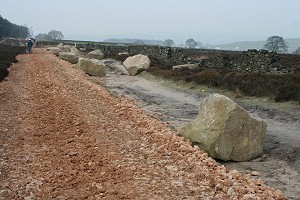
However SCC take a different view.
'The Public Rights of Way Improvement Plan (ROWIP 2007-17) was heavily consulted upon. It was approved in 2006 and published later that year.' explains Sam Beaton, SCC engineer responsible for public rights of way.
'The works taking place at the moment are all within that approved plan. [They] were advertised on site prior to the works commencing giving details of the works and contact details of the project engineer. Not a single objection was received before works started and the work was approved by the local access forum.'
'As well as working with local groups on these improvements we have also ensured that all materials have been approved by Natural England. It is always going to be difficult to keep everyone happy when you have a multiuse track. What we try to do is ensure that we provide a solution that works for as many track users as possible.'
'We are unable to offer dedicated tracks for single interests or sports on public rights of way and all users have a duty of care to themselves and each other.'
The council have a statutory responsibility to repair the rights of way network and increase access potential for the widest possible number of users. In the case of Houndkirk Road these include 4x4 drivers and trail bikers. This duty accords with the goals of the Public Rights of Way Improvement Plan (ROWIP) that was developed following the enactment of the Countryside Rights of Way Act 2000. The ROWIP was produced in partnership with the Local Access Forum, the statutory public consultative body brought into being from directives of the CROW ACT 2000, and SCC are keen to point out that the Houndkirk Road works were also consulted upon.
'The Local Access Forum visited the site in December' says a council spokeswoman. 'These persons included officers from the Peak and Northern walking group of the Ramblers Association, British Horse Society and others interested in access issues including elected members. The concerns received about the works were discussed at the last Local Access Forum meeting held on the 4th of March, where support for the project was voiced.'
But critics complain of major shortcomings in the recent consultation.
'SCC and Natural England have actually pointed out to me that there is no statutory duty to consult people when this kind of work is carried out' says John Horscroft. 'A belated presentation to the Local Access Forum was hamstrung by the fact that those being consulted were only asked to agree to such principles as access for the less able and reduction of damage to the surrounding SSSI, aims to which we can all subscribe. Seeing the changes in the flesh would probably have elicited a very different response.'
'Worst of all, the responsible bodies have completely underestimated the importance of this particular gateway to the Peak District. For many Sheffield residents Houndkirk Road is their way of getting out of the city onto the moors, their little bit of wilderness, and it's very important to people. Even though the current works are now a done deal, let's hope that in the future more determined efforts will be made to consult all user groups about changes to the landscape we love.'
The new track surface may weather and bed in over time, but how long might it take for local feeling to soften?

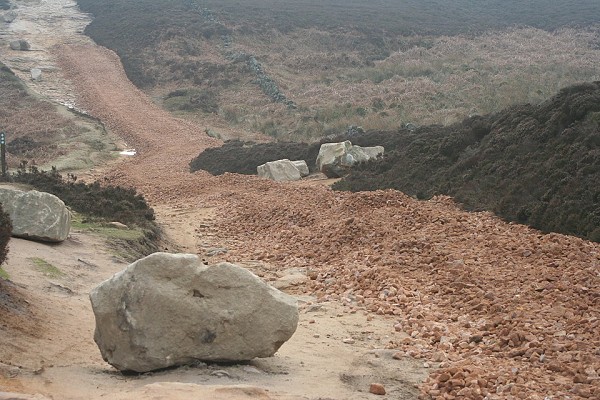
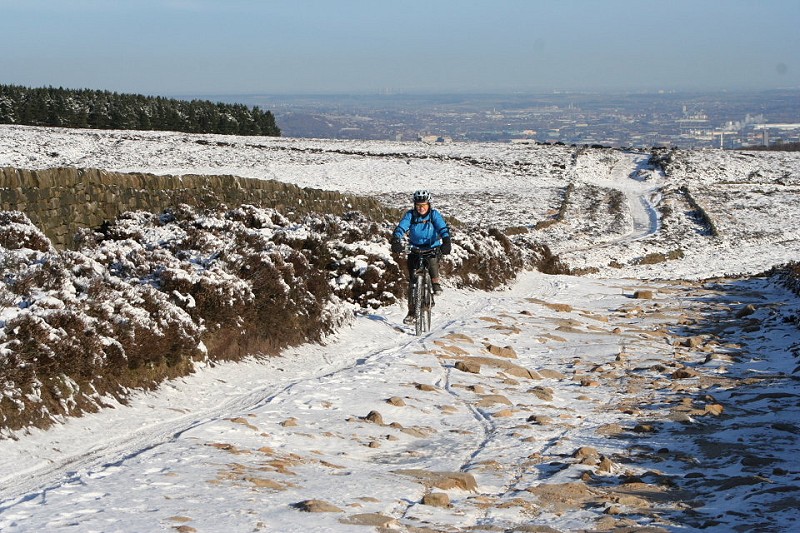





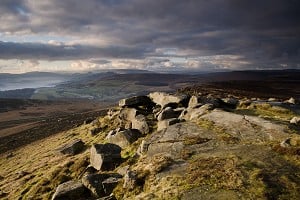
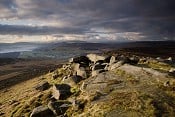
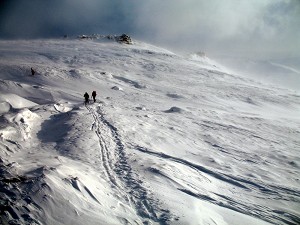



Comments